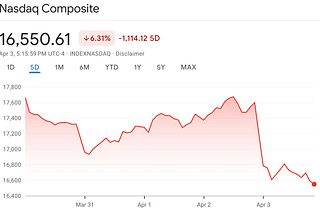
Court Implodes Trump’s Mar-a-Lago Defense (and the Errant Judge Who Bought It)
The timeline makes clear how careful and even deferential prosecutors were.

On Thursday, the U.S. Court of Appeals for the Eleventh Circuit finally put to rest the special master nonsense that Donald Trump set in motion late August, when he persuaded U.S. District Judge Aileen Cannon to interfere with the FBI’s investigation of his illegal harboring of classified and other presidential records at his Mar-a-Lago residence in Florida. Special Counsel Jack Smith can now proceed apace with the investigation.
What’s remarkable about the decision is not the outcome—anyone with a passing legal education could see that Cannon’s ruling was indefensible. It’s how the panel of three judges utterly demolished Trump and Cannon both, in unforgiving language inspired by foundational principles of constitutional restraint.
Especially notable is that, like Cannon, two of the judges—Elizabeth Grant and Andrew Brasher—were appointed by former President Trump. Judge Grant clerked for Justice Brett Kavanaugh. Brasher previously served as a law clerk to the third judge on the Eleventh Circuit panel, William Pryor, who was appointed by George W. Bush. Given the exhausting polarization of party politics these days—and how it has infected a faction of the U.S. Supreme Court—the Eleventh Circuit’s decision in Trump v. United States stands as a triumph for the Constitution and the rule of law.
The court made a few things very clear: The FBI acted entirely by the book, which nobody disputes, including Trump. Cannon had no constitutional (that is, “jurisdictional”) authority to do what she did—unless a former president is somehow extra-special and above the laws that apply to everyone else. Cannon assumed Trump is. He’s not.
The opinion is relatively terse at twenty-one pages, but expertly drafted, beginning with a wry recapping of the story—one that unfolded once upon a time, when Trump lost the election . . .
“As [Trump]’s presidential term drew to a close in January 2021, movers transferred documents from the White House to his personal residence, a South Florida resort and club known as Mar-a-Lago.”
“Over the course of that year and into the next, and consistent with its responsibilities under the Presidential Records Act, . . . the National Archives and Records Administration sought to obtain missing presidential records that its officials believed were in [Trump]’s possession.”
“In January 2022, after months of discussions, [Trump] transferred fifteen boxes of documents to the National Archives. Inside were ‘newspapers, magazines, printed news articles, photos, miscellaneous print-outs, notes, presidential correspondence, personal and post-presidential records, and a lot of classified records’” (emphasis added).
“The Department of Justice was alerted about the classified materials in February 2022. . . . The National Archives later advised [Trump] that it planned to provide the FBI access to the records in roughly one week.”
When Trump “requested a delay of up to eleven days, the National Archives agreed.”
“When the new deadline arrived in April 2022, [Trump] requested yet another extension. He also informed the National Archives that if it declined to grant it, he would make a ‘protective assertion of executive privilege’ over the documents.”
“The National Archives rejected that assertion as unviable—saying the ‘question in this case is not a close one’—and informed [Trump]’s representatives that it would give the FBI access to the records.”
Trump “did not follow through with any effort to block the FBI’s review of the documents.”
“So the FBI reviewed the records in mid-May, more than three months after it first learned that classified documents had been stored at Mar-a-Lago. It found 184 documents marked at varying levels of classification, including twenty-five marked top secret” (emphasis added).
“In the meantime, the FBI had developed evidence that even more classified information likely remained at [Trump]’s residence. The Department of Justice obtained a grand-jury subpoena for all documents or writings bearing classification markings that were in [Trump]’s custody or control, and [Trump]’s counsel was served with the subpoena in early May.”
Trump “did not assert claims of privilege or declassification in response to the subpoena. But he did seek more time to produce the requested documents, and the government eventually extended the compliance deadline to June 7, 2022.”
“A few days before the deadline was set to expire, [Trump]’s representatives produced an envelope wrapped in tape, which was consistent with an effort to comply with handling procedures for classified documents. . . . It contained thirty-eight classified documents, seventeen of which were marked top secret. . . . A declaration accompanying the documents certified that a ‘diligent search was conducted’ of the boxes moved from the White House and that ‘[a]ny and all responsive documents’ had now been produced” (emphasis added).
“Even so, the FBI developed more evidence that other classified documents remained at Mar-a-Lago. In August 2022—over one-and-a-half years after the end of [Trump]’s presidential administration, six months after the first transfer of boxes to the National Archives, and three months after the subpoena was served—the Department of Justice sought a search warrant. It presented an FBI agent’s sworn affidavit to a Florida magistrate judge, who agreed that probable cause existed to believe that evidence of criminal violations would likely be found at Mar-a-Lago.”
“The warrant affidavit described a set of protocols proposed by the government to create a ‘Privilege Review Team.’ The team was made up of agents who were not otherwise participating in the investigation; they were tasked with reviewing certain seized documents to protect [Trump]’s attorney-client privilege.”
“The FBI executed the search warrant on August 8. Agents seized approximately 13,000 documents and a number of other items, totaling more than 22,000 pages of material.”
“Despite the certification from [Trump] that ‘[a]ny and all’ documents bearing classification markings had been produced, fifteen of the thirty-three seized boxes, containers, or groups of papers contained documents with classification markings, including three such documents found in desks in [Trump]’s office. All told, the search uncovered over one hundred documents marked confidential, secret, or top secret” (emphasis added).
“A few weeks later, [Trump] filed a new action in the United States District Court for the Southern District of Florida, which he styled as a ‘Motion For Judicial Oversight And Additional Relief.’ The motion asked the court to (1) appoint a special master; (2) enjoin review of the seized materials until a special master was appointed; (3) require the United States to supply a more detailed list of the items seized; and (4) order the United States to return any item seized that was not within the scope of the search warrant.”
“The motion was a civil filing and did not explain how the district court had jurisdiction to act on all of its requests.”
You can see what’s going on here.
The court uses the story to paint Trump into an illogical corner. One party—the U.S. government, which here consists of the National Archives, DOJ, the FBI, the Presidential Records Act, and the magistrate judge who duly applied the Fourth Amendment—bent over backwards not only with meticulous care about the law and about the former president’s rights but also with courtesies, extensions of time, and deference to his representations that he had turned over everything he’d taken from the Oval Office that was classified. The other party is the president and his lawyers, who repeatedly delayed, made empty threats, and then outright misrepresented the facts.
The vivid picture is not good for Trump, who is under criminal investigation for these misdeeds. And the decision effectively lets Special Counsel Smith loose on all 22,000 documents so the government can pursue the story to its logical conclusion, which could include in an indictment.
On the law itself, the court goes through a handful of factors that must be established in order for a federal court—pursuant to a squishy form of authority known as “equitable jurisdiction”—to interfere with another branch of government’s exercise of its constitutional prerogative, i.e., the execution of the law under Article II.
Step one of that test requires evidence of the government’s “callous disregard” for someone’s constitutional rights. Nobody—including Trump—claims any disregard for his constitutional rights in this scenario, let alone a callous one. The Eleventh Circuit states that this should have been the end of the matter. Cannon glossed over it.
On the second factor, which requires a showing that Trump had an “individual interest in and need for the material whose return he seeks,” the court says that Trump didn’t identify what materials he was interested in or why he needed him, deadpanning: “The district court was undeterred by this lack of information.”
Third, Trump had to show he’d be “irreparably injured” if he didn’t get the seized property back immediately. By his account, his reputation was under threat. The court retorts that the government knows it has to keep classified material secret, else officials risk their own criminal liability. And in any event, a leak would harm the American people—not Trump personally. What’s more, if Trump were correct, anybody whose premises are searched could march into court and get an order stopping a criminal investigation on the grounds that sensitive information taken from their home could become public. That would functionally turn the federal courts into uber-prosecutors with no prosecutorial authority in the first place under Article III of the Constitution, which gives federal judges their power.
“All these arguments are a sideshow,” the panel concludes. “The law is clear. We cannot write a rule that allows any subject of a search warrant to block government investigations after the execution of the warrant. Nor can we write a rule that allows only former presidents to do so.”
Sorry, Donald. No more kings.










